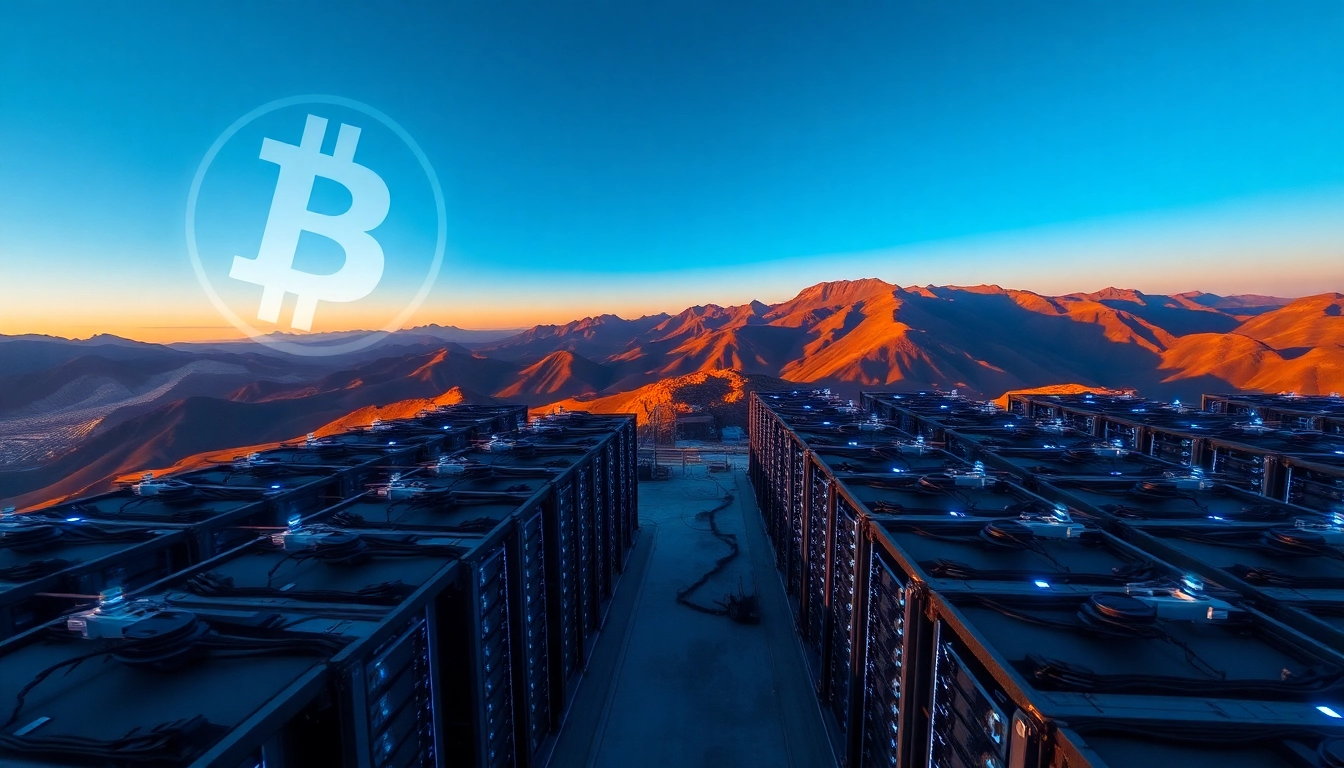Understanding Bitcoin Mining
Bitcoin mining is a fundamental pillar of the cryptocurrency ecosystem and the process through which new bitcoins are generated. It plays a crucial role in validating transactions on the Bitcoin network and ensuring that the system remains secure, decentralized, and efficient. This article delves into the intricacies of Bitcoin mining, providing insights into its workings, the importance of the mining process, and practical advice for those interested in entering the mining realm.
What is Bitcoin Mining?
Bitcoin mining refers to the computational process of validating transactions, securing the network, and adding new blocks to the blockchain, which is the public ledger of all Bitcoin transactions. When miners solve complex mathematical puzzles, they effectively verify and confirm transaction data. Each successful solution not only enables the addition of a block but also rewards the miner with a set amount of Bitcoin, thereby encouraging more participants to engage in mining.
The Importance of Bitcoin Mining in Cryptocurrency
Mining is vital for several reasons:
- Security: Miners contribute to the security of the Bitcoin network by validating transactions and preventing double-spending.
- Decentralization: The mining process allows for a decentralized network where no single entity has control, ensuring the ethos of cryptocurrency.
- Transaction Processing: Miners facilitate transactions, ensuring they are confirmed and added to the blockchain.
- New Bitcoin Creation: Mining is the way new bitcoins are introduced into circulation. Each block mined adds a particular amount of Bitcoin to the total supply.
How Bitcoin Mining Works: The Basics
Bitcoin mining operates on a proof-of-work mechanism, which requires miners to compete in solving challenging cryptographic puzzles. When a miner successfully solves a puzzle, they are allowed to add a new block of transactions to the blockchain. The current reward for mining a block, as of the latest halving event, is 6.25 BTC. The process involves several steps:
- Transaction Gathering: Miners collect transactions that are pending in the network.
- Transaction Verification: Each transaction is scrutinized to ensure that the sender has sufficient balance.
- Block Creation: Valid transactions are bundled together into a block.
- Hashing: Miners utilize algorithms (SHA-256 for Bitcoin) to create a unique digital signature or hash for the block.
- Solving the Puzzle: Miners attempt to solve mathematical problems by varying deadlines until they find a hash that meets the network difficulty.
- Broadcasting the Solution: The successful miner broadcasts their solution to the network to confirm their block.
Getting Started with Bitcoin Mining
Choosing the Right Hardware for Bitcoin Mining
The choice of hardware significantly influences mining performance and profitability. Miners typically use the following hardware:
- ASIC Miners: Application-Specific Integrated Circuits (ASICs) are specialized hardware designed for mining Bitcoin efficiently. They provide the best hashing power while consuming less electricity compared to generic hardware.
- FPGA Miners: Field-Programmable Gate Arrays are more flexible than ASICs and can be programmed for various tasks but are generally less efficient in mining Bitcoin.
- GPU Miners: Graphics Processing Units are commonly used for mining altcoins but are not effective for Bitcoin due to high competition and difficulty levels.
Mining Software Options for Beginners
Selecting the appropriate mining software is crucial for managing mining operations. Here are some popular choices:
- CGMiner: A widely-used open-source software that supports ASIC and FPGA devices and provides extensive control and monitoring features.
- BFGMiner: Similar to CGMiner, but it is designed for FPGA and ASIC miners, offering features for overclocking and fan speed control.
- EasyMiner: A user-friendly option for beginners that provides a graphical interface, making it easier to set up mining operations without in-depth technical knowledge.
Setting Up Your Bitcoin Mining Operation
Setting up a mining operation involves several steps:
- Research and Planning: Determine your target profits, analyze hardware options, and research electricity costs in your area.
- Assemble Your Hardware: Purchase and set up your mining hardware according to the manufacturer’s guidelines.
- Install Mining Software: Download and install your chosen mining software and configure it to connect to your mining pool or the Bitcoin network.
- Start Mining: Begin your mining operation and closely monitor the performance and profitability of your setup.
Advanced Strategies in Bitcoin Mining
Cloud Mining vs. Traditional Mining: Pros and Cons
Understanding the differences between cloud mining and traditional mining is crucial for making informed decisions.
- Cloud Mining: This model allows users to rent mining capacity from remote data centers without the need for hardware. Pros include lower upfront costs, no maintenance, and reduced energy expenses. However, it may involve higher fees and less control over your operation.
- Traditional Mining: This method allows miners to maintain direct control over their mining rigs. While it offers more control and potential for higher returns, it comes with significant upfront investments, ongoing maintenance requirements, and higher energy consumption.
Strategies to Optimize Mining Profits
To maximize profits from Bitcoin mining, miners should consider the following strategies:
- Join a Mining Pool: Collaborating with a mining pool allows miners to combine resources and increase the chances of successfully mining blocks, with earnings distributed among pool members.
- Choose the Right Location: Find locations with low electricity costs and suitable climate conditions to minimize cooling costs.
- Optimize Your Setup: Overclocking your hardware and fine-tuning mining settings can enhance performance and increase overall rewards.
Understanding Mining Pools and Their Benefits
Mining pools are groups of miners who combine their computational power to enhance the chances of mining blocks. Benefits include:
- Steady Income: Mining pools provide a more consistent payout compared to solo mining, where profits can be irregular.
- Lower Variance: The shared workload reduces the variance in the income stream for individual miners.
- Community Support: Joining a mining pool often comes with access to a community of miners, which can provide support and information sharing.
Challenges in Bitcoin Mining
Common Issues Faced by Bitcoin Miners
Despite its potential, Bitcoin mining comes with several challenges:
- High Competition: As more miners join the network, the difficulty of mining increases, making it harder to earn rewards.
- Fluctuating Prices: The volatility of Bitcoin’s market price can impact profitability and return on investment.
- Hardware Costs: The initial investment in mining equipment can be significant, and outdated hardware may require frequent upgrades.
Regulatory Challenges in Bitcoin Mining
As the popularity of Bitcoin mining grows, so does regulatory scrutiny. Miners must be aware of laws and regulations that may impact their operations, such as:
- Licensing Requirements: Various jurisdictions may impose specific licensing restrictions for operating mining facilities.
- Tax Implications: Miners need to understand how taxation applies to cryptocurrencies, including taxes on capital gains and the reporting of income.
- Zoning Regulations: Some areas have zoning laws that affect where and how mining operations can be conducted.
Environmental Impact and Sustainability Concerns
Bitcoin mining is energy-intensive and has raised concerns regarding its environmental impact. Miners and stakeholders are increasingly focusing on sustainable practices, including:
- Renewable Energy Sources: Using solar, wind, or hydroelectric power can reduce the carbon footprint of mining operations.
- Energy Efficiency Technologies: Investing in energy-efficient hardware can lower energy consumption and enhance sustainability.
- Carbon Offsetting: Some mining operations are exploring carbon offsetting initiatives to counteract their environmental impact.
Future Trends in Bitcoin Mining
The Evolution of Mining Technology
As technology advances, the Bitcoin mining landscape is expected to evolve significantly. Key trends to watch for include:
- Improved ASIC Technology: Ongoing innovations in ASIC chip design lead to more efficient mining hardware, maximizing output while reducing energy demands.
- Integration of Artificial Intelligence: AI could assist in optimizing mining strategies and predicting network conditions to enhance profitability.
- Enhanced Mining Software: Advances in mining software will likely continue to improve monitoring, reporting, and management capabilities.
Impact of Bitcoin Halving on Mining Feasibility
Bitcoin halving events, which occur approximately every four years, halve the reward miners receive for a newly mined block. This process has profound implications for mining economics, as it affects:
- Revenue: Miners must adjust their strategies post-halving, as reduced rewards mean only the most efficient operations can continue to profit effectively.
- Network Difficulty: Over time, the overall difficulty of mining increases, necessitating more advanced hardware and optimized strategies to remain competitive.
- Market Dynamics: Halving events often lead to bullish trends in Bitcoin prices, impacting miner revenues and investment decisions.
Future of Bitcoin Mining: What to Expect
Looking ahead, Bitcoin mining is poised for further transformation. Emerging trends include:
- Decentralization of Mining Operations: As more geographical regions get involved, the traditional concentration of mining farms in specific areas may diminish.
- Integration with Financial Services: The evolution of Bitcoin could lead to more institutional interest and investments in mining operations, driving further innovation.
- Sustainability Initiatives: The industry is likely to see increased pressure and initiatives to adopt eco-friendly practices amidst growing environmental concerns.












